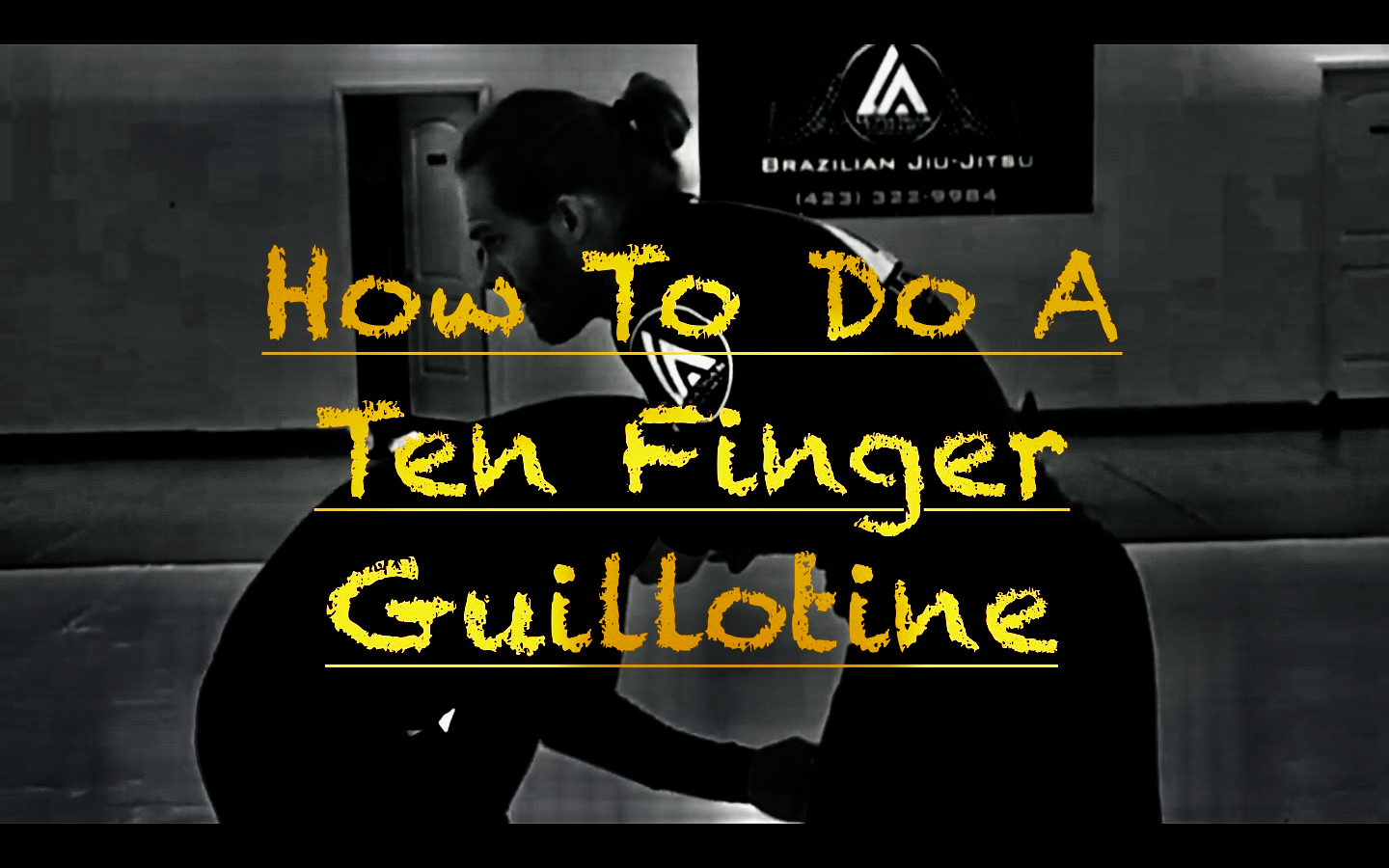
The guillotine is one of the safest submission to attempt in all of BJJ. Going to a guillotine submission in Brazilian Jiu Jitsu doesn’t sacrifice your position or run the risk of leaving you in a weak position if your opponent is able to escape like the triangle from guard or other common submissions. Instead, a missed guillotine leaves you face to face with your opponent, almost exactly the same position you were in when you started. For that reason, the guillotine can be an easy submission to attempt even if you’re unsure of your ability with it.
The ten finger guillotine is one of the variations of the guillotine choke. The ten finger guillotine has the advantage of not requiring one of your opponent’s arms to be trapped, which also means that your opponent can’t use the trapped arm to escape if they’re strong or crafty.
Start: Front headlock position
Step 1: Grip under opponent’s chin and secure your chest over their head
Step 2: Grip free hand underneath choking hand like a cup and saucer (props to Still Rolling for that delightfully southern way of describing it)
Step 3: Rotate both hands towards your body and into opponent’s neck so that the base of your choking hand thumb pushes up and towards opponent’s chin, keeping your chest and shoulder over opponent’s head
Finish: Submission via ten finger guillotine


